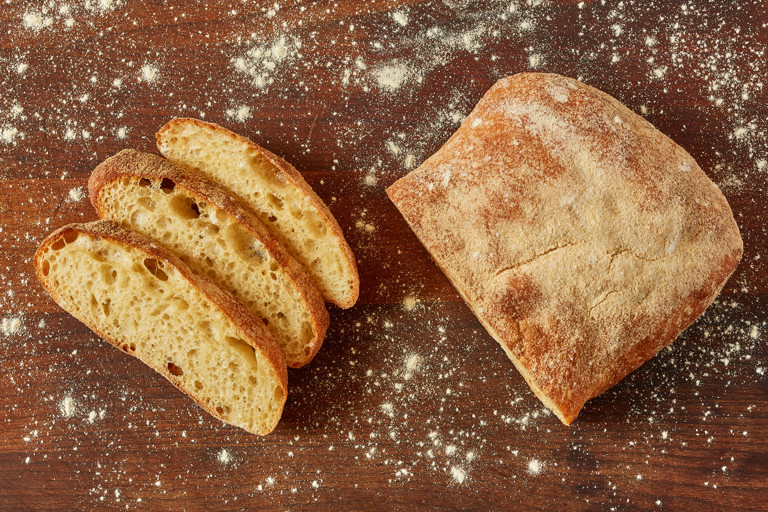Khorasan flour ciabatta
- medium
- Makes 4
- 55 minutes
This khorasan ciabatta recipe showcases the ancient grain (also known as Kamut) in all its glory, with the buttery and nutty flavour of the wheat giving the Italian bread an interesting twist. While you have to wait several hours for the dough to prove at various stages, it's definitely worth the wait.
Fermenting a portion of your flour in advance (known as a pre-ferment) adds flavour, as well as making a softer dough (in a similar vein as adding fats to your dough) and extending its shelf life of the bread.
When making your bread, try mixing with one hand and using your other hand to hold the bowl. Keeping your mixing hand wet will make it much easier to handle the dough and having one clean hand stops you getting dough everywhere!
Ingredients
Metric
Imperial
Pre-ferment
- 200g of strong bread flour
- 200g of water, cold
- 5g of quick yeast
Dough
- 230g of water, lukewarm
- 120g of strong bread flour
- 175g of khorasan flour
- 5g of quick yeast
- 10g of salt
Method
Get in touch
Please sign in or register to send a comment to Great British Chefs.


